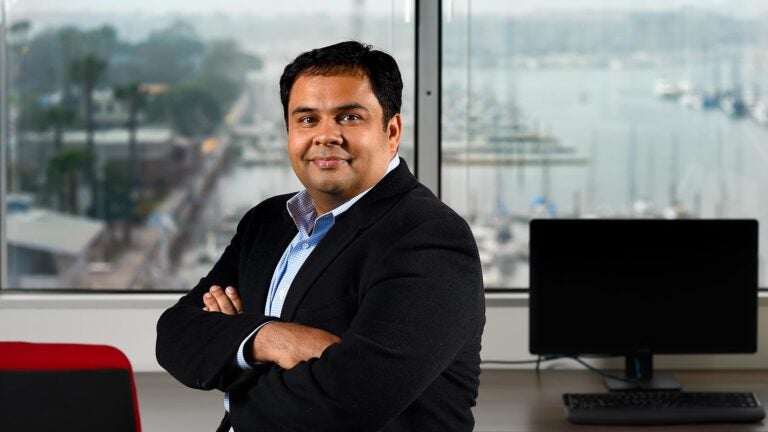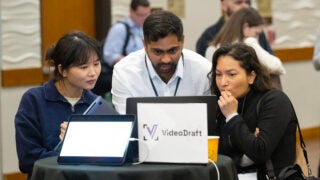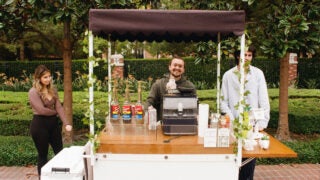
Ashish Soni is founding director of the USC Viterbi Startup Garage and the Viterbi Student Institute for Innovation. Photo by Gus Ruelas
Q&A: Teaching Entrepreneurship in the Digital Age
Ashish Soni preaches the benefits of hunger, heightened awareness and, yes, failure
You could call Ashish Soni MS ’02 a startup guru for digitally minded USC students. Four years ago, Soni launched one of the nation’s first educational programs in digital entrepreneurship at the USC Viterbi School of Engineering, in collaboration with the USC Marshall School of Business. Born in India into a family of entrepreneurs, Soni, 38, also has been on the Socaltech 50 and TechweekLA 100 lists of top Los Angeles tech movers and shakers. USC Trojan Family Magazine asked him about entrepreneurship in the hurry-hurry digital age.
How does digital entrepreneurship differ from regular entrepreneurship?
Fifteen years ago, you wrote a business plan, you raised money and then against that money you hired a team and built a product. We now live in an era where most of the building blocks are available either at low cost or free. There’s a new generation of entrepreneurs who don’t need to raise a lot of money to try an idea out. Launching digital products today is quite different from how companies were built 10 or 15 years ago.
What makes you a good entrepreneur?
Entrepreneurship is in my DNA. In India’s Gujarat state, where I’m from, it’s culturally acceptable to do your own thing rather than to work for anybody else. And I just love doing new things. It’s what gets me up in the morning.
A lot of what we do at the institute is not just incubating companies but incubating people. It’s instilling leadership skills and learning how to navigate high-risk, high-uncertainty waters, which is what a startup does every day.
One of the first things I teach my students is that every problem leads to an opportunity. Every week, the students in my class have to observe three problems and submit summaries to me. They’re developing an observational muscle that pays attention to what’s not working.
How do you generate new ideas?
I’m a good observer—and as an immigrant, I can be regarded as an outsider, which heightens my sense of awareness. Also, change of any kind is a source of giant opportunity. Each generation has a different lens to look at reality, and I have a new group of students every year. I listen to them and I read a lot. I hunger for new knowledge and information. Failure is big, too. Learning what doesn’t work is as important as learning what does work.
Of your many hats, which do you enjoy wearing most?
The hat of an educator is No. 1 because I care so much about my students. But a very close second is my entrepreneur’s hat. I’m biologically built to do new things and that’s what gets me going. I couldn’t give up those two.



